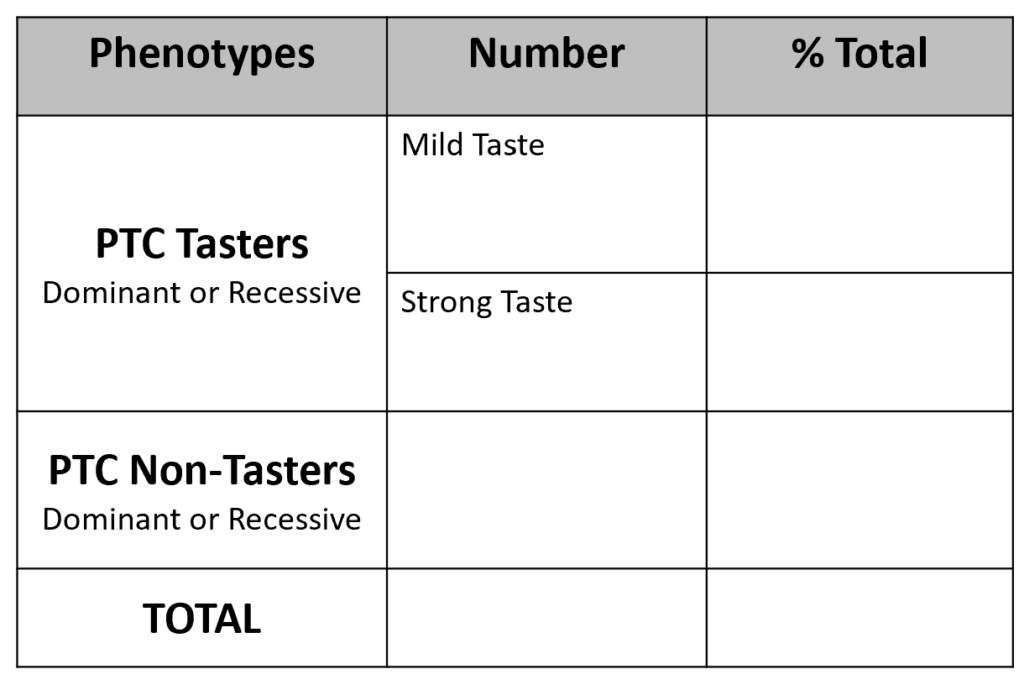Table of Contents
The Genetics of Taste
Overview
In this activity, you will explore the genetics behind the ability to taste a compound called phenylthiocarbamide (PTC). You will be given two test strips to taste: one will be plain paper and the other will be PTC. The class will pool their results of this taste test and the data will be analyzed.
Some of our personal preferences arise from the way we were brought up. Culture plays a role in our likes and dislikes. Likewise, our experiences play a role in how we respond to certain stimuli. Another major factor that plays a role into our preferences comes wired in our genome. The DNA in our cells is the instruction manual for who we are. We are programmed to seek out things of a nutritive values in order to acquire raw materials like carbohydrates, proteins and lipids. In our search for nutritive compounds we have learned to avoid things that don’t taste good. Bitter things have a tendency to be associated with toxic compounds in nature.
When eating a food item for the first time, molecules hit our tongue and stimulate multiple sensations: sweet, sour, salty, savory and bitter. Attributed to these multiple taste types are a diverse family of receptors that bind to the molecules that result in our perception of these sensations. Something bitter might make us learn to avoid this food item in the future.
One type of bitter receptor senses the presence of a chemical called phenylthiocarbamide (PTC). This chemical chemically resembles toxic compounds found in plants but is non-toxic. The ability to taste PTC is comes from the gene called TAS2R38. This gene encodes a protein that on our tongues that communicates the bitterness of this chemical. There are two common alleles of this gene with at least five more uncommon variants. Within the two common forms, a single nucleotide polymorphism (SNP) is responsible for changing one amino acid in the receptor. It’s this difference of one amino acid that results in the ability of the receptor to either respond or not respond to PTC. We inherit one copy of the gene from our father and one copy from our mother. Based on how our parents gametes were formed and what alleles we received during the fertilization event determines how we respond to this chemical. Because we each have two copies of this gene, we can utilize simple Mendelian genetics to understand which allele is dominant or recessive.
Materials
Each student will need the following materials:
- 1 Control strip
- 1 PTC strip
Method
- Place a piece of Control paper on the tongue and indicate if there is a taste.
- Place a piece of PTC paper on the tongue and indicate if there is a taste and the taste severity.
- Fill out the table for the class to identify how many non-tasters, tasters or super-tasters there are.
Analysis
Work with your lab group to answer the following:
- Is the ability to taste PTC dominant or recessive?
- Assign a descriptor allele for the dominant (a capital letter) or the recessive (a lowercase letter) and draw a Punnett square for the F2 generation of two heterozygous parents.
- How do you explain the presence of those who can’t taste PTC, those who can taste it, and those who really can’t stand the taste of it?
- This chemical is non-toxic and doesn’t exist in nature. Do you think there is a selective pressure that confers an advantage to those who do taste it?




